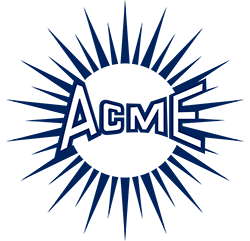Forming / Drawing / Stamping
Industrial Cleaners
August 27, 2018Forming / Drawing / Stamping
ACME Drawing lubricants are designed to provide a film between the tool and metal to prevent die galling, die wear and to reduce friction. This allows the proper flow of metal under pressure to plastically deform with minimum wear and friction.
Drawing oils are formulated in a range from low to high viscosities utilizing polar, extreme pressure (EP) lubricants, and combinations of both as required by application.
- Lubricant formulations that can be used for shallow drawing of aluminum and deep drawing of aluminum, copper, brass and bronze.
- Lubricants designed for stamping and drawing of non‐ferrous metals such as copper, brass and bronze.
- Products intended for the stamping and shallow drawing of carbon steels and alloy steels.
- Drawing oils for the stamping of alloy and stainless steels, shallow drawing of alloy and stainless steels and deep drawing of carbon steels, alloy and stainless steels.
Water soluble products using highly refined petroleum hydrocarbons blended with additives such as EP, polar, emulsifiers, corrosion inhibitors and protection from microbial infestation.
- Products intended for stamping operations on carbon steels, copper, brass and bronze.
- Soluble oils for severe drawing and blanking operations on carbon and stainless steels.
Vanishing oils are special purpose lubricants that are chemically inert, colorless and odorless liquids dry to the touch after one hour and used when cleaning of the workpiece is not required.
- Stamping of low carbon steel and nonferrous metals.
ACME product recommendations are based on these factors that must be considered to select the correct lubricant.
- Severities of the draw.
- Type of workpiece metal.
- Method of application.
- Post‐process compatibility.
- Regulatory issues
Severity Classification Guideline
Low Severity – based on low‐carbon commercial quality steel.
- Maximum localized stretch of 10% in a 1 inch length.
- Drawing a cup with 10% reduction in diameter.
Moderate Severity ‐ based on low‐carbon commercial quality steel.
- Maximum localized stretch of 20% in 1 inch length.
- Drawing a cylindrical shell with 20% reduction in diameter.
High Severity – based on low‐carbon drawing quality sheet steel.
- Maximum localized stretch of 30% in 1 inch length.
- Drawing a cylindrical shell with 30% reduction in diameter.
Maximum Severity – based on low‐carbon drawing quality sheet steel.
- Maximum localized stretch of 40% in 1 inch length.
- Drawing a cylindrical shell with maximum reduction in diameter (reduction of 40% or more.
Stainless Steels lubrication requirements are more critical because it is usually necessary to preserve the high‐quality surface. Stainless steels have higher strength, greater hardness, lower thermal conductivity, and higher coefficient of friction. More heat is being generated at the surface being formed, and less is being conducted away than in forming a comparable workpiece from low‐carbon steel.
Aluminum, aluminum alloys, cooper and copper alloys lubricants must be compatible and suitable with the particular forming operation. Avoidance of staining or corrosion is an important consideration.
